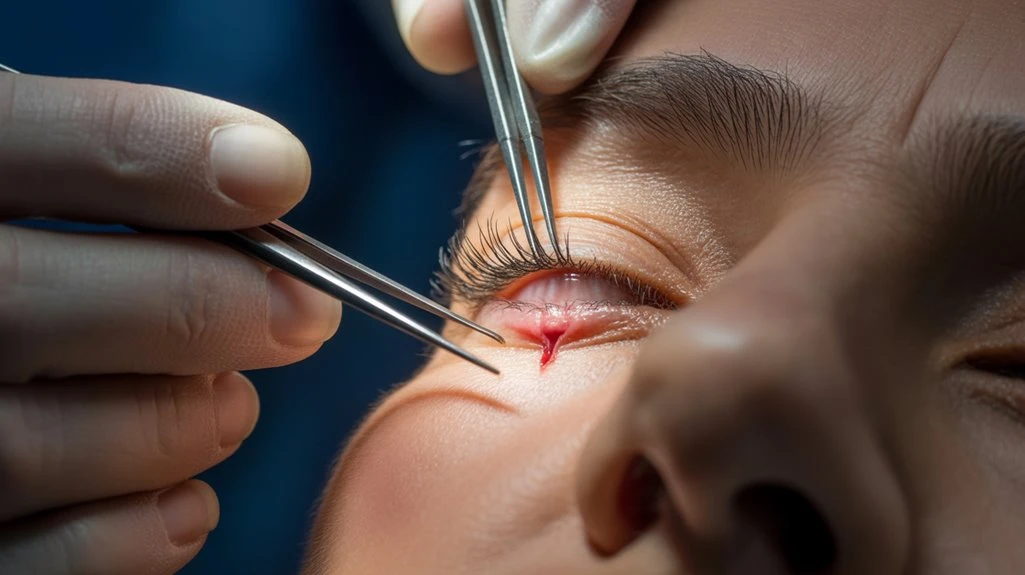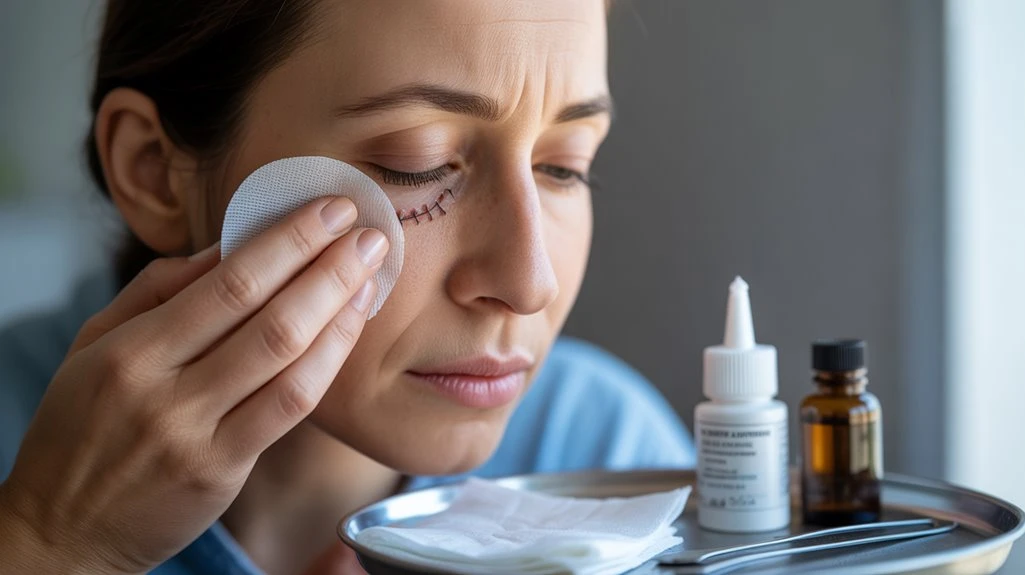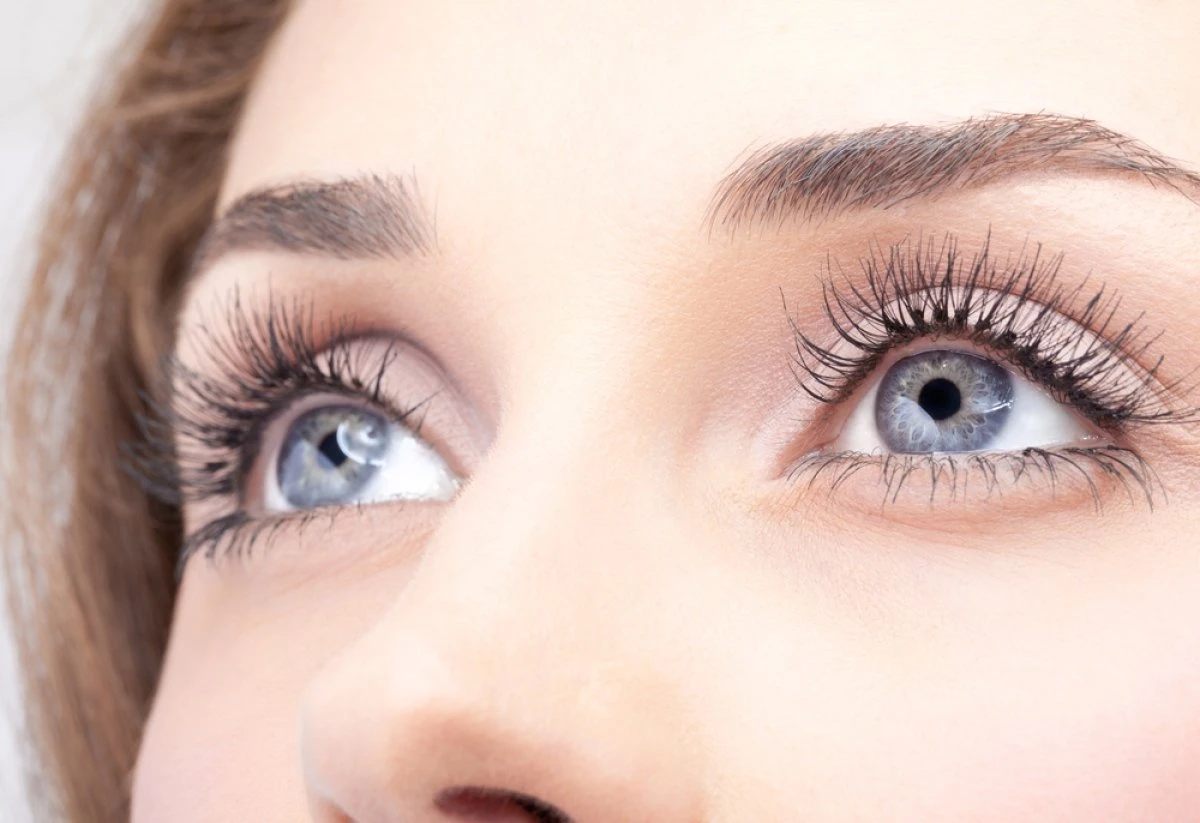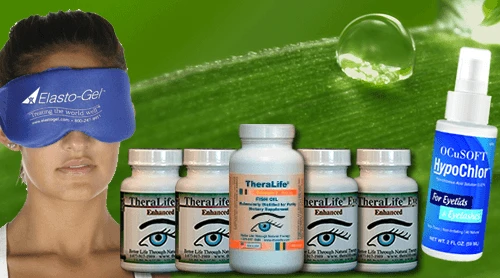TheraLife offers a unique solution for eye care, especially for those struggling with conditions like blepharitis, dry eyes, and chalazion. TheraLife is the only company providing oral treatments specifically designed to improve eye health from within. Their products support the body’s natural ability to reduce inflammation, enhance tear secretion, and maintain healthy eyes.
For conditions like chalazion, when conservative treatments fail, TheraLife’s oral eye treatment can be an effective alternative. It targets the root cause by promoting overall eye health, potentially reducing the need for surgical interventions. Recovery and relief are facilitated naturally, with a focus on comprehensive care that integrates dietary recommendations and lifestyle changes.
TheraLife’s approach also includes detailed guidance on aftercare and managing risks associated with various eye conditions. By leveraging natural ingredients, their products aim to quickly resolve persistent issues while supporting long-term eye health. Explore TheraLife’s offerings to discover how their oral treatments can benefit your eye health journey.
Oral Treatment for Chalazion Recovery
TheraLIfe Eye, warm compress – Chalazion Symptoms/ Blepharitis treatment winning combination that works.
Add To Cart
Key Takeaways
- Chalazion surgery is a minor procedure performed under local anesthesia to remove a persistent or large eyelid nodule.
- The surgeon everts the eyelid and makes a small incision, usually from the inner (conjunctival) side, using a chalazion clamp.
- Granulomatous and fatty material inside the blocked gland is carefully scooped or scraped out.
- Stitches are usually unnecessary; the wound is typically left open to heal naturally.
- Postoperative care includes antibiotic ointment, cold compresses, and avoiding eyelid manipulation to reduce infection and promote healing.
Understanding What a Chalazion Is

A chalazion is a localized, chronic lipogranulomatous inflammation of the meibomian gland within the eyelid. According to the chalazion definition, this condition results from obstruction of the gland’s duct, leading to granuloma formation in the tarsal plate.
You’ll typically notice a painless, firm, and slow-growing nodule within the eyelid, distinguishing it from acute infections. Common symptoms include localized eyelid swelling, mild tenderness, and sometimes redness.
Unlike a hordeolum, a chalazion rarely causes significant pain or systemic symptoms. Visual acuity is generally unaffected unless the lesion is large enough to exert pressure on the cornea.
Chronicity is a key feature; lesions often persist for weeks to months without spontaneous resolution. Understanding these clinical characteristics helps you recognize and accurately identify a chalazion. In some cases, untreated chalazia can lead to preseptal cellulitis, which may cause lid disfiguration if left to progress.
Signs You Might Need Surgical Intervention
When conservative management fails to resolve a chalazion, you may need to contemplate surgical intervention.
Accurate symptom recognition is essential: persistent eyelid swelling, localized tenderness, or a firm, non-resolving nodule after several weeks of warm compresses and topical therapies may indicate the need for advanced treatment options.
Additional red flags include visual disturbance due to lesion size, recurrent chalazia, or suspicion of underlying malignancy.
If you observe signs of secondary infection—such as increasing redness, pain, or purulent discharge—prompt evaluation is warranted.
Surgical intervention is typically reserved for cases unresponsive to medical therapy.
Your ophthalmologist will assess the duration, severity, and impact on ocular function before recommending surgery.
Recognizing these clinical indicators guarantees timely escalation to definitive management and peak outcomes.
Surgical procedures are typically performed on an outpatient basis under local anesthesia, with chalazion surgery lasting about 20 minutes and patients often returning to normal activities within a week.
Step-by-Step Overview of the Surgical Procedure
Though chalazion excision is a minor ophthalmic procedure, it demands meticulous technique to minimize complications and optimize outcomes.
First, your ophthalmologist will review anesthesia options—typically, local infiltration with lidocaine guarantees comfort and effective analgesia.
Next, they’ll evert your eyelid to access the lesion’s palpebral conjunctival surface. Using sterile technique, a chalazion clamp stabilizes the lid and reduces bleeding.
An incision is then made directly over the chalazion via the conjunctival route, minimizing external scarring. The surgeon employs curettage or excision—key surgical techniques—to remove granulomatous material and the pseudocapsule.
Hemostasis is achieved with gentle pressure or cautery if needed. Finally, the wound is left unsutured to heal by secondary intention.
The procedure typically takes less than 30 minutes.
Chalazion excision is often considered when warm compresses fail to provide relief, indicating the need for surgical intervention.
Recovery and Aftercare Tips

Following chalazion excision, proper postoperative care reduces the risk of infection, accelerates healing, and mitigates complications such as lid notching or recurrence. Adhering to aftercare guidelines is essential: apply prescribed topical antibiotics as directed and use cold compresses for the first 24 hours to minimize edema. Avoid manipulating the eyelid and refrain from using contact lenses until your ophthalmologist approves. Maintain eyelid hygiene with gentle cleansing, as instructed. Warm compresses serve as a non-invasive initial management by promoting drainage and enhancing meibomian gland function, which can be beneficial post-surgery. The recovery timeline typically ranges from one to two weeks, with most patients resuming normal activities within a few days. Monitor for persistent swelling, discharge, or pain, and promptly report these to your provider.
Potential Risks and How to Minimize Them
While chalazion excision is generally safe and effective, several potential risks warrant consideration, including infection, hemorrhage, eyelid scarring, glandular damage, and recurrence. You should understand that surgical complications, though uncommon, can manifest as persistent eyelid edema, abnormal wound healing, or inadvertent injury to the meibomian glands. To minimize these risks, your ophthalmic surgeon will employ aseptic technique, precise incision placement, and thorough hemostasis. Preoperative assessment of your medical history helps identify factors—such as anticoagulant use or immune compromise—that elevate complication risk. Patient education is critical; you’ll need to adhere to prescribed postoperative care, including antibiotic ointment and activity restrictions, to optimize healing and reduce infection likelihood. Warm compresses are recommended to promote drainage of blocked glands and facilitate healing. Promptly report any unusual symptoms to your provider for immediate evaluation and intervention.
Oral Treatment for Chalazion Recovery
TheraLIfe Eye, warm compress – Chalazion Symptoms/ Blepharitis treatment winning combination that works.
Add To Cart
Frequently Asked Questions
Can Chalazion Surgery Be Performed Under General Anesthesia?
Yes, you can have chalazion surgery performed under general anesthesia, especially if you’re anxious, very young, or unable to cooperate with local anesthesia.
While general anesthesia guarantees you don’t feel pain, it does introduce additional surgical risks, including respiratory complications and longer recovery.
Clinically, most cases use local anesthesia due to lower risks and faster discharge.
However, evidence supports general anesthesia in select cases where patient safety and cooperation are concerns.
Will Insurance Typically Cover Chalazion Surgery Costs?
Think of insurance coverage for chalazion surgery like a gatekeeper at a club—only letting you in if you meet the criteria.
Most insurance plans do cover chalazion surgery when a provider documents medical necessity, such as persistent pain, vision obstruction, or failed medical management.
A 2022 ophthalmology survey found 85% of cases received coverage with proper documentation.
Always check your plan’s pre-authorization requirements to avoid unexpected out-of-pocket costs.
Are There Alternatives to Surgery for Recurring Chalazia?
If you’re experiencing recurring chalazia, you do have alternatives to surgery.
Clinically, you can try natural remedies such as applying warm compresses to the affected eyelid several times daily, which promotes meibomian gland drainage and reduces inflammation.
Additionally, maintaining eyelid hygiene with gentle cleansing and considering topical or oral antibiotics under physician supervision can help.
However, if conservative measures fail, your ophthalmologist may recommend surgical intervention for definitive management.
How Soon Can I Return to Work or School After Surgery?
You can usually return to work or school within 1-2 days after chalazion surgery, provided you follow key recovery tips and post operative care instructions.
Maintain ocular hygiene, use prescribed antibiotic ointment, and avoid strenuous activities.
Evidence shows that most patients experience minimal discomfort and rapid healing.
Monitor for signs of infection or excessive swelling, and attend follow-up appointments for best clinical outcomes.
Always consult your ophthalmologist before resuming regular activities.
Can Chalazion Surgery Affect My Vision Long-Term?
You might worry about long term effects or vision changes after chalazion surgery. Clinically, this procedure rarely causes permanent visual impairment.
Surgeons use precise techniques to minimize trauma to ocular structures. Evidence shows that complications like persistent corneal astigmatism or scarring are uncommon. Most patients regain baseline visual acuity quickly.
If you notice any sustained vision changes postoperatively, report them immediately, as prompt intervention can prevent further complications and guarantee ideal recovery.
Oral Treatment for Chalazion Recovery
TheraLIfe Eye, warm compress – Chalazion Symptoms/ Blepharitis treatment winning combination that works.
Add To Cart
Conclusion
Theralife’s products offer a unique approach to ocular health, focusing on oral eye treatment care—a solution exclusively available from Theralife. By opting for Theralife’s innovative products, you are taking control of your eye health, aiming to restore clarity and comfort with precision. Their evidence-based aftercare ensures that recovery is swift and complications are minimized, much like tending to a delicate garden. Theralife’s offerings are backed by extensive research, and by using their products, you can confidently look forward to improved eye health.
References
- 1.
- Jin KW, Shin YJ, Hyon JY. Effects of chalazia on corneal astigmatism : Large-sized chalazia in middle upper eyelids compress the cornea and induce the corneal astigmatism. BMC Ophthalmol. 2017 Mar 31;17(1):36. [PMC free article] [PubMed]
- 2.
- Fukuoka S, Arita R, Shirakawa R, Morishige N. Changes in meibomian gland morphology and ocular higher-order aberrations in eyes with chalazion. Clin Ophthalmol. 2017;11:1031-1038. [PMC free article] [PubMed]
- 3.
- Mittal R, Tripathy D, Sharma S, Balne PK. Tuberculosis of eyelid presenting as a chalazion. Ophthalmology. 2013 May;120(5):1103.e1-4. [PubMed]
- 4.
- Hanafi Y, Oubaaz A. [Leishmaniasis of the eyelid masquerading as a chalazion: Case report]. J Fr Ophtalmol. 2018 Jan;41(1):e31-e33. [PubMed]
- 5.
- Wu AY, Gervasio KA, Gergoudis KN, Wei C, Oestreicher JH, Harvey JT. Conservative therapy for chalazia: is it really effective? Acta Ophthalmol. 2018 Jun;96(4):e503-e509. [PMC free article] [PubMed]
- 6.
- Chang M, Park J, Kyung SE. Extratarsal presentation of chalazion. Int Ophthalmol. 2017 Dec;37(6):1365-1367. [PubMed]
- 7.
- Carlisle RT, Digiovanni J. Differential Diagnosis of the Swollen Red Eyelid. Am Fam Physician. 2015 Jul 15;92(2):106-12. [PubMed]
- 8.
- Ozer PA, Gurkan A, Kurtul BE, Kabatas EU, Beken S. Comparative Clinical Outcomes of Pediatric Patients Presenting With Eyelid Nodules of Idiopathic Facial Aseptic Granuloma, Hordeola, and Chalazia. J Pediatr Ophthalmol Strabismus. 2016 Jul 01;53(4):206-11. [PubMed]
- 9.
- Aycinena AR, Achiron A, Paul M, Burgansky-Eliash Z. Incision and Curettage Versus Steroid Injection for the Treatment of Chalazia: A Meta-Analysis. Ophthalmic Plast Reconstr Surg. 2016 May-Jun;32(3):220-4. [PubMed]
- 10.
- Park YM, Lee JS. The effects of chalazion excision on corneal surface aberrations. Cont Lens Anterior Eye. 2014 Oct;37(5):342-5. [PubMed]
- 11.
- 12.
- Görsch I, Loth C, Haritoglou C. [Chalazion – diagnosis and therapy]. MMW Fortschr Med. 2016 Jun 23;158(12):52-5. [PubMed]





